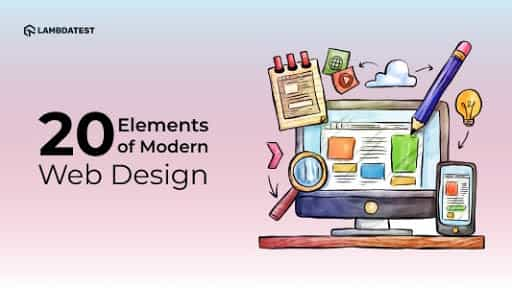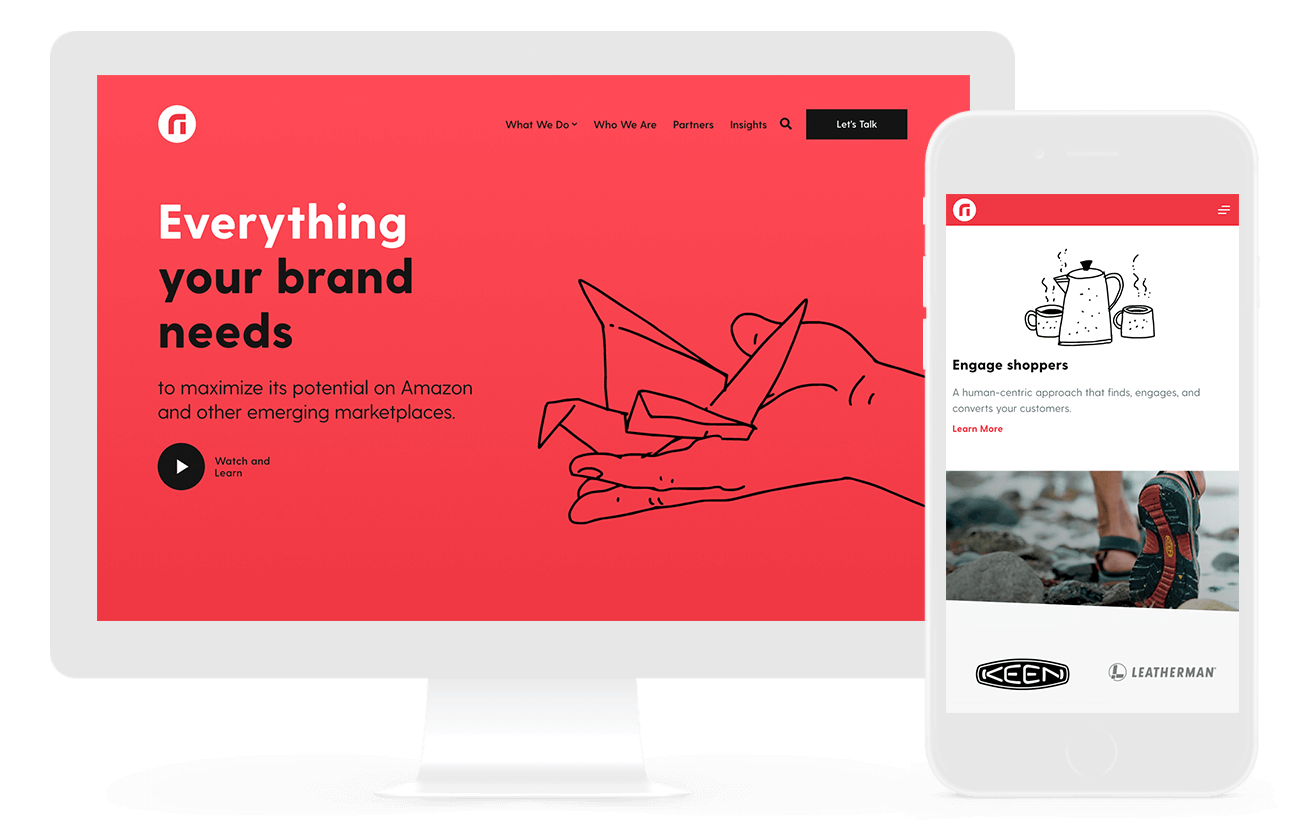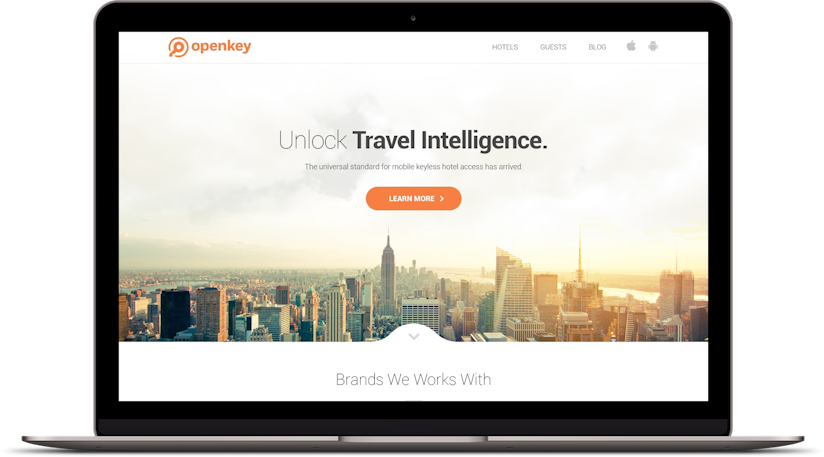All Categories
Featured
Table of Contents
- – Lifted Logic: Web Design In Kansas City - Seo ...
- – Web Page Design: A Comprehensive Guide - Adob...
- – Boxcar Studio - Wordpress & Drupal Web Design...
- – Powderkeg: Web Design Madison, Wi Tips and Tr...
- – What Is A Web Designer? (2022 Guide) - Brains...
- – Web Design Studio & Digital Marketing Agency ...
- – St Louis Seo Company - St Louis Web Design A...
- – What Is Web Design? The Ultimate Guide To We...
- – Web Design Courses & Tutorials - Codecademy ...
- – Why Good Web Design Is Important, And Why Yo...
- – Responsive Web Design - A List Apart Tips an...
Lifted Logic: Web Design In Kansas City - Seo - Website ... Tips and Tricks:
Quick summary Usability and the utility, not the visual style, figure out the success or failure of a site. Given that the visitor of the page is the only individual who clicks the mouse and for that reason chooses everything, user-centric style has established as a standard approach for effective and profit-oriented web style - web design frederick md.
and the utility, not the visual style, determine the success or failure of a website. Given that the visitor of the page is the only individual who clicks the mouse and therefore decides whatever, user-centric style has ended up being a basic method for successful and profit-oriented web style. After all, if users can't use a feature, it might also not exist.
g. where the search box need to be positioned) as it has currently been performed in a number of short articles; instead we concentrate on the methods which, utilized properly, can result in more advanced style choices and streamline the procedure of perceiving provided information. Please notice that you might be interested in the usability-related short articles we have actually published prior to: Principles Of Good Website Design And Reliable Web Design Guidelines, In order to utilize the concepts correctly we initially require to comprehend how users engage with sites, how they believe and what are the standard patterns of users' behavior.
Web Page Design: A Comprehensive Guide - Adobe Xd Ideas Tips and Tricks:
Visitors look at each brand-new page, scan a few of the text, and click on the first link that captures their interest or vaguely resembles the thing they're searching for. There are large parts of the page they do not even look at. Most users browse for something intriguing (or beneficial) and clickable; as quickly as some appealing prospects are found, users click.
If a page supplies users with high-quality material, they want to jeopardize the content with advertisements and the style of the website. This is the reason why not-that-well-designed websites with high-quality content acquire a lot of traffic over years. Content is more essential than the design which supports it.

Users don't read, they scan. Notice how "hot" locations abrupt in the middle of sentences. This is normal for the scanning process. Very simple concept: If a website isn't able to satisfy users' expectations, then designer failed to get his task done effectively and the business loses money. The higher is the cognitive load and the less user-friendly is the navigation, the more willing are users to leave the website and look for alternatives.
Boxcar Studio - Wordpress & Drupal Web Design ... - Ann Arbor Tips and Tricks:
Neither do they scan webpage in a linear fashion, going sequentially from one site area to another one. Rather users satisfice; they pick the first sensible choice. As soon as they find a link that appears like it may cause the objective, there is a great opportunity that it will be instantly clicked.
It does not matter to us if we comprehend how things work, as long as we can use them. If your audience is going to imitate you're creating signboard, then design great billboards." Users want to have the ability to control their browser and rely on the constant data discussion throughout the site.
If the navigation and website architecture aren't intuitive, the number of enigma grows and makes it harder for users to comprehend how the system works and how to obtain from point A to point B. A clear structure, moderate visual ideas and quickly recognizable links can assist users to find their path to their aim.
Powderkeg: Web Design Madison, Wi Tips and Tricks:

claims to be "beyond channels, beyond products, beyond circulation". What does it imply? Because users tend to explore websites according to the "F"-pattern, these 3 declarations would be the very first aspects users will see on the page once it is filled. The style itself is simple and user-friendly, to comprehend what the page is about the user requires to browse for the answer.
Once you have actually achieved this, you can interact why the system is beneficial and how users can benefit from it. Do Not Waste Users' Patience, In every project when you are going to use your visitors some service or tool, try to keep your user requirements minimal.
First-time visitors are ready to, not filling long web types for an account they might never ever utilize in the future. Let users check out the website and discover your services without forcing them into sharing private information. It's not sensible to require users to enter an email address to check the feature.
What Is A Web Designer? (2022 Guide) - Brainstation® Tips and Tricks:
And that's what you desire your users to feel on your web site. The registration can be done in less than 30 seconds as the type has horizontal orientation, the user does not even require to scroll the page.
A user registration alone is sufficient of an obstacle to user navigation to cut down on inbound traffic. Handle To Focus Users' Attention, As sites supply both static and dynamic content, some aspects of the user interface attract attention more than others do.
Focusing users' attention to particular areas of the website with a moderate use of visual elements can assist your visitors to get from point A to point B without thinking of how it really is supposed to be done. The less concern marks visitors have, the they have and the more trust they can develop towards the company the site represents.
Web Design Studio & Digital Marketing Agency • Gravitate Tips and Tricks:
4. Aim For Function Exposure, Modern web styles are usually criticized due to their technique of assisting users with aesthetically appealing 1-2-3-done-steps, big buttons with visual effects and so on. But from the style perspective these elements in fact aren't a bad thing. On the contrary, such as they lead the visitors through the site content in a very easy and easy to use way.
The website has 9 primary navigation choices which show up at the first look. The choice of colors may be too light, though. is an essential concept of effective interface style. It does not truly matter how this is attained. What matters is that the material is well-understood and visitors feel comfortable with the way they connect with the system.
Instead a rate: simply what visitors are looking for. An optimum option for efficient writing is touse short and concise phrases (come to the point as rapidly as possible), usage scannable design (categorize the material, use several heading levels, utilize visual aspects and bulleted lists which break the circulation of uniform text blocks), use plain and unbiased language (a promotion does not require to sound like advertisement; offer your users some reasonable and objective factor why they must use your service or stay on your site)6.
St Louis Seo Company - St Louis Web Design And Internet ... Tips and Tricks:
Users are hardly ever on a website to delight in the design; furthermore, in many cases they are looking for the information in spite of the style - web design frederick md. Aim for simplicity rather of intricacy. From the visitors' point of view, the best website style is a pure text, with no ads or further content obstructs matching exactly the inquiry visitors used or the content they have actually been searching for.
Finch clearly provides the details about the website and gives visitors a choice of choices without overcrowding them with unneeded material. Not only does it assist to for the visitors, but it makes it possible to perceive the details provided on the screen.
Complex structures are more difficult to check out, scan, evaluate and work with. If you have the choice between separating two design sections by a noticeable line or by some whitespace, it's normally much better to use the whitespace service. (Simon's Law): the much better you handle to offer users with a sense of visual hierarchy, the much easier your content will be to perceive.
What Is Web Design? The Ultimate Guide To Website Design ... Tips and Tricks:
The very same conventions and guidelines ought to be applied to all elements.: do the most with the least amount of hints and visual elements. Clarity: all components ought to be developed so their meaning is not uncertain.
Conventions Are Our Pals, Conventional design of site components doesn't result in a dull web website. It would be an use nightmare if all websites had various visual discussion of RSS-feeds.
understand what they're anticipating from a website navigation, text structure, search positioning etc. A case in point from usability sessions is to translate the page in Japanese (presuming your web users don't know Japanese, e. g. with Babelfish) and offer your usability testers with a task to discover something in the page of various language.
Web Design Courses & Tutorials - Codecademy Tips and Tricks:
Steve Krug suggests that it's better to, but benefit from conventions when you don't. 10. Test Early, Test Frequently, This so-called TETO-principle must be applied to every website design task as use tests typically supply into substantial problems and concerns related to a given layout. Test not far too late, not insufficient and not for the wrong factors.
Some crucial points to remember: according to Steve Krug, and screening one user early in the job is much better than screening 50 near completion. Accoring to Boehm's first law, errors are most regular throughout requirements and design activities and are the more costly the later on they are removed.
That indicates that you create something, test it, fix it and then check it once again. There might be issues which have not been discovered throughout the preliminary as users were practically blocked by other problems. usability tests. Either you'll be indicated the issues you have or you'll be pointed to the absence of major design flaws which remains in both cases a beneficial insight for your task.
Why Good Web Design Is Important, And Why You Need It Tips and Tricks:

This holds for designers too. After you've worked on a site for couple of weeks, you can't observe it from a fresh point of view anymore. You understand how it is developed and therefore you understand precisely how it works you have the knowledge independent testers and visitors of your site wouldn't have.
It can be connected to other areas such as graphic design, user experience, and multimedia arts, but is more aptly seen from a technological perspective. It has become a big part of people's everyday lives. It is tough to picture the Internet without animated graphics, different designs of typography, background, videos and music.

Throughout 1991 to 1993 the World Wide Web was born. Text-only pages could be viewed using a simple line-mode web browser. There had been no integrated technique to graphic design elements such as images or noises.
Responsive Web Design - A List Apart Tips and Tricks:
The W3C was produced in October 1994 to "lead the Web to its complete potential by developing typical protocols that promote its development and guarantee its interoperability." This discouraged any one business from monopolizing a propriety web browser and programs language, which might have altered the result of the World Wide Web as a whole.
As this has actually happened the innovation of the web has actually also moved on. There have also been substantial modifications in the method individuals utilize and access the web, and this has actually altered how sites are developed.
Learn more about Lovell Media Group LLC or TrainACETable of Contents
- – Lifted Logic: Web Design In Kansas City - Seo ...
- – Web Page Design: A Comprehensive Guide - Adob...
- – Boxcar Studio - Wordpress & Drupal Web Design...
- – Powderkeg: Web Design Madison, Wi Tips and Tr...
- – What Is A Web Designer? (2022 Guide) - Brains...
- – Web Design Studio & Digital Marketing Agency ...
- – St Louis Seo Company - St Louis Web Design A...
- – What Is Web Design? The Ultimate Guide To We...
- – Web Design Courses & Tutorials - Codecademy ...
- – Why Good Web Design Is Important, And Why Yo...
- – Responsive Web Design - A List Apart Tips an...
Latest Posts
Web Design Blog - Webdesigner Depot Webdesigner Depot Tips and Tricks:
What Does A Web Designer Do? - Careerexplorer Tips and Tricks:
Responsive Web Design - A List Apart Tips and Tricks:
More
Latest Posts
Web Design Blog - Webdesigner Depot Webdesigner Depot Tips and Tricks:
What Does A Web Designer Do? - Careerexplorer Tips and Tricks:
Responsive Web Design - A List Apart Tips and Tricks: